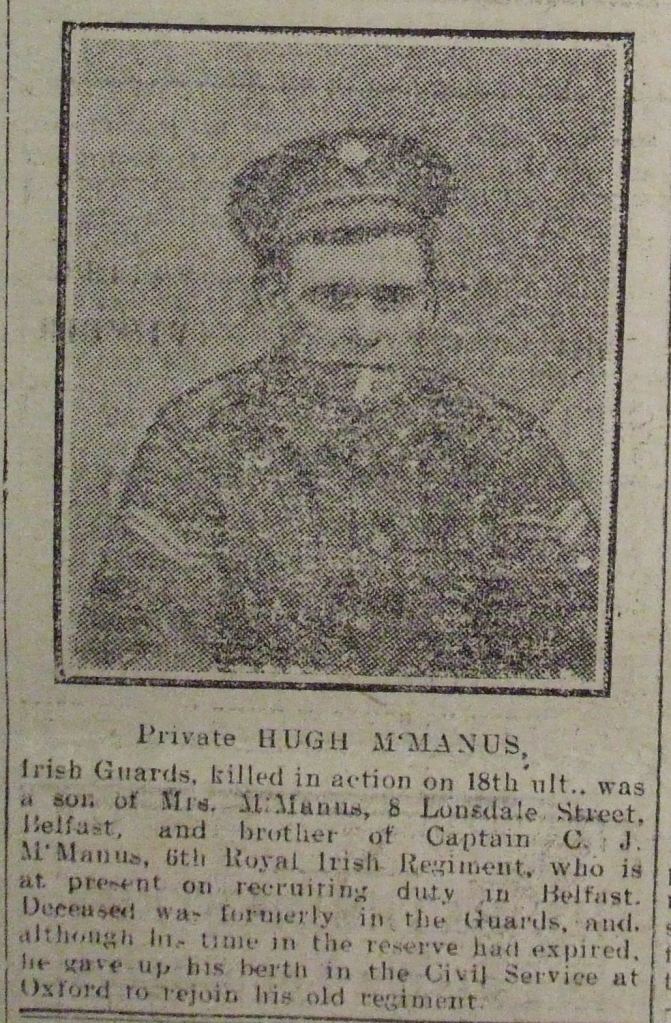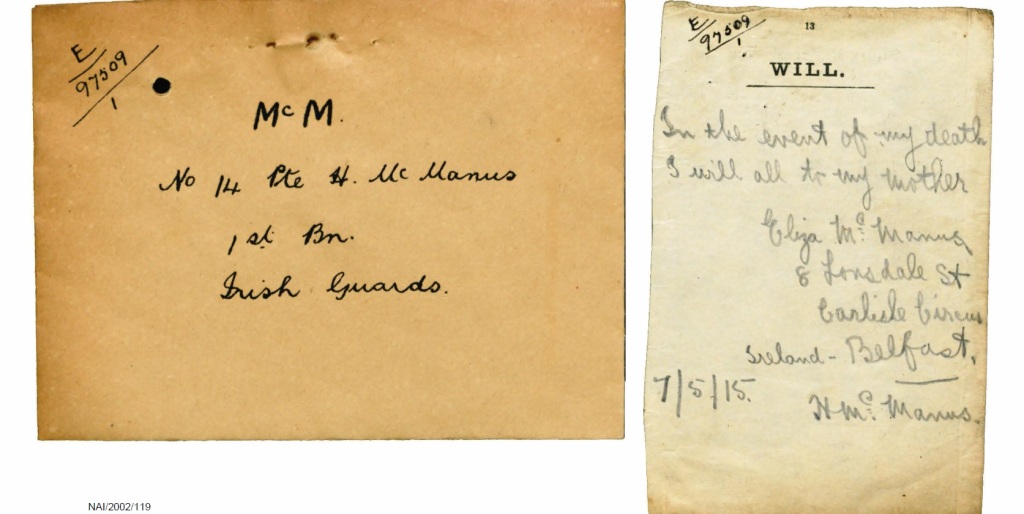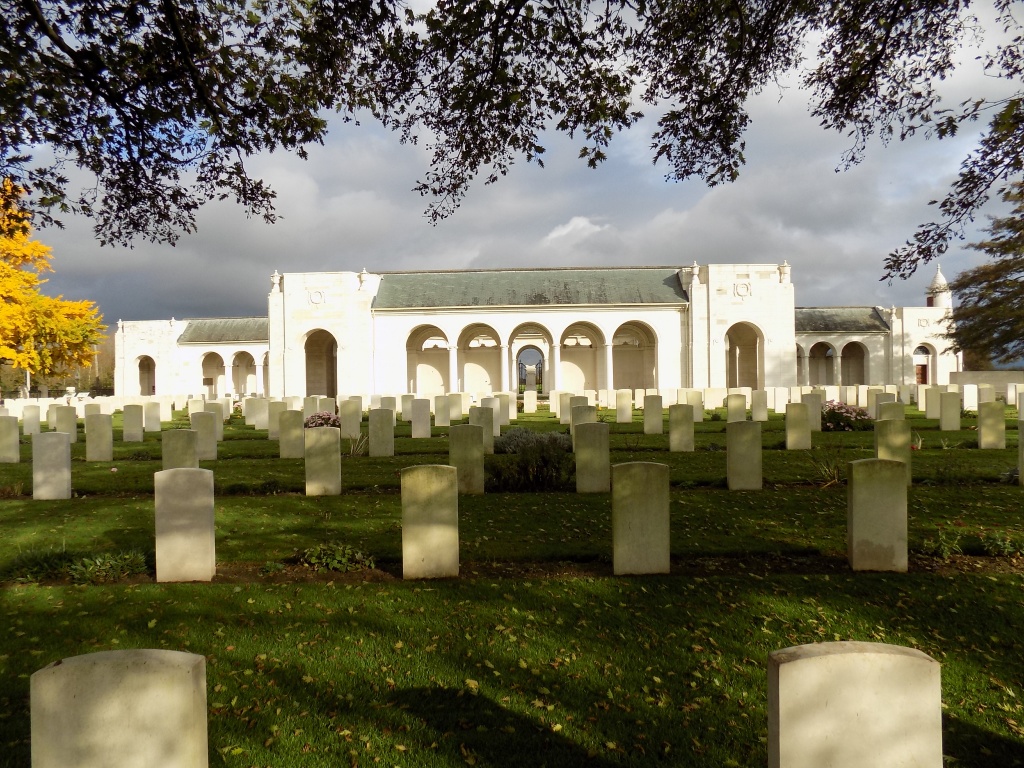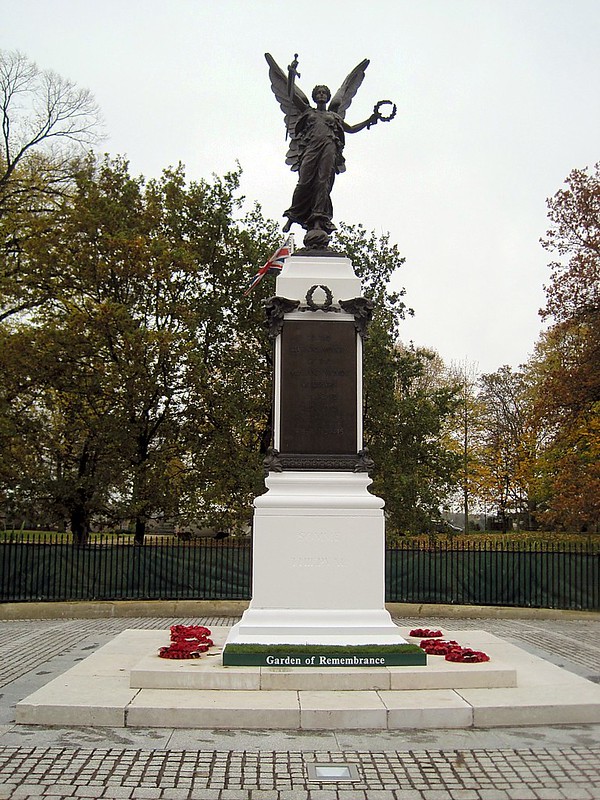- See Hugh McManus’s entry on the Board of Trade’s Ancestry public tree.
- This information updates the group’s previous research published on the former DTI website (now archived by the National Archives).
- Do you have any more information about Hugh McManus? If so the War Memorial Research Group would love to hear from you
Name recorded on Board of Trade Memorial: H. McManus
Born: 22 June 1882 in Lisburn, County Antrim, Ireland
Date of Death: 18 May 1915
Age at death: 32
Service, Regiment, Corps, etc: Irish Guards
Unit, Ship, etc: 1st Battalion
Enlisted: Oxford, England
Rank: Private (Service No: 14)
Decorations: WW1 Service Medals (Victory Medal, British War Medal and 1915 Star)
War (and theatre): WW1 (France and Flanders)
Manner of Death: Killed In Action (KIA)
Family Details: Elizabeth McManus (mother) of 102 Haypark Avenue, Belfast, Ireland
Residence: Belfast, Ireland
Home Department: Board of Trade – Labour Department (London & South Eastern Division)
Civilian Rank:
Cemetery or Memorial: Le Touret Memorial, Pas de Calais (Panel 4); Board of Trade War Memorial; Memorial to Staff of the Ministry of Labour, Caxton House, Tothill Street, London; Lisburn War Memorial; Irish National War Memorial Gardens
Biography:

Hugh Michael McManus was born on 22 June 1882 in Hannahstown, Lisburn, County Antrim in Northern Ireland. We know that his mother was Elizabeth Mcmanus (nee Woods) (1856-?). His father was also called Hugh McManus (1841-1910). He is believed to have had 7 siblings, four of whom survived infancy – Charles Joseph McManua (1873-?), Mary McManus (1881-?), James McManus (1885-?) and Agnes McManus (1888-). His father was a police constable.
In 1901, the McManus family are living at 2 Eglington Street, Belfast. The younger Hugh is not listed living at home, as he is known to have enlisted in the army.
By the 1911 census, Hugh’s mother, Elizabeth is recorded as a widow and living as a ‘house keeper’ at 34 Lonsdale Street, Court Ward, Antrim, Belfast, Ireland. Only her children James and Agnes are living with her. Hugh is possibly working at this stage in either Belfast or London. We know that he worked in the Labour Department (London and South East Divisions) which then formed part of the Board of Trade.

We know that Hugh lived in Belfast but that he enlisted in Oxford to serve as a Private in the Irish Guards. The regiment was first formed on 1 April 1900 by Army Order 77 that stated “Her Majesty the Queen, having deemed it desirable to commemorate the bravery shown by the Irish regiments in the recent operations in South Africa, has been graciously pleased to command that an Irish regiment of Foot Guards be formed. This regiment will be designated ‘The Irish Guards’”. Hugh’s low military service number – 14 – indicates that he joined the regiment aged 18 either on the same day or shortly after its formation in 1900.
He must have seen and been attracted to serve by recruitment posters such as the one shared above.
On the eve of WW1, the Irish Guards were based at Aldershot Hampshire, England on ceremonial duties. The 1st Battalion was deployed to France just eight days after the declaration of war in August 1914.

According to his WW1 medal roll index card, Hugh first served overseas in France on 23 November 1914. He was therefore awarded the 1915 Star for early service during the first part of the war before the start of conscription.
The battalion fought in many WW1 battles including at Mons (1914), the First Battle of Ypres (1914) and at Festubert (1915).
Festubert was an attack by the British army in the Artois region of France on the Western Front. It formed part of a series of attacks by the French and British and was a continuation of the Battle of Aubers Ridge (9 May 1915). It was the first major battle in which Canadian troops fought. The battle was preceded by a 60 hour bombardment by 433 items of artillery firing about 100,000 shells. However this had little significant impact on the German defences. On the day of Hugh McManus’s death, the 1st Caandian Division, assisted by the 51st (Highland) Division attacked but made little progress faced with German artillery and further reinforcements and the British dug in a new front line. The Irish Guards saw some action but not much.
Hugh was killed in action aged 32 on 18 May 1915 during the Battle of Festubert. The following day on 19 May 1915, the Irish Guards were taken out of the front line trenches. We know from the war diary that Hugh was one of 22 men killed, 284 wounded and 86 missing. As they were leaving the trenches, the Irish Guards were hit by high explosive shells and 10 more men were killed.
On his death, Hugh was unmarried and he had no descendants. He left a soldiers will and his personal effects to his mother, Elizabeth.

He has no known grave. His name is commemorated on Panel 4 of the Le Touret Memorial in France. The memorial is located near Le Touret village and commemorates the lives of over 13,400 British soldiers killed in this part of the Western Front from the beginning of October 1914 until the eve of the Battle of Loos in late September 1915. All those named on the memorial have no known grave. The memorial was designed by John Reginald Truelove, who himself fought in WW1 and is created in the style of an Italian loggia. It was unveiled by the British Ambassador to France, Lord Tyrrell on 22 March 1930.

Hugh’s life and sacrifice is also remembered by two Civil Service War Memorials in London – the Board of Trade War Memorial and the Memorial to Staff of the Ministry of Labour. He is remembered in his home town by the Lisburn War Memorial.
Hugh is also remembered at Islandbridge, Dublin by the Irish National War Memorial Gardens, which was designed by Sir Edwin Lutyens and built in memory of the 49,400 Irishmen who gave their lives during WW1. The name of every single soldier is contained inside the granite bookrooms in sumptuously illustrated manuscripts in “Ireland’s Memorial Records 1914-1918” designed by the famous graphic artist and illustrator Harry Clarke (1889-1931). The garden is a beautiful place of architectural interest and is one of the most famous memorial gardens in Europe with extensive trees, rose gardens and herbaceous borders.


